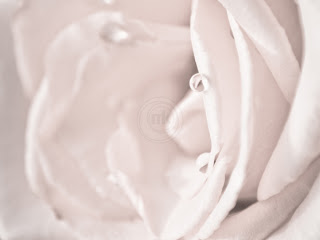Macro photography is taking close-up photos of small things and objects. Small objects (such as flowers, and insects...etc) in macro photography are generally larger than the things you are taking pictures of when doing micro photography.
This kind of photography requires a special lens that is optimised to focus sharply on small details. What photographers love the most about macro photography is that it allows them to see a different new world of details that is unnoticed by the naked eye.
The lens is usually specified to focus down to "1:1" or "life size".
Macro photography be done using any of the below techniques:
Reverse lens technique
All what you have to do is that you have to reverse the lens the opposite way it is supposed to be. With this technique you will be able to produce great quality macro photos without spending a dollar on any other macro expensive lens. But note well that you won’t be able to change the aperture due to the lens being detached.
Macro Lenses
The best macro lenses are the newest autofocus mount models made by Canon and Nikon. Each lens will focus continuously from infinity to 1:1.
Sigma, Tamron, and Tokina make excellent prime macro lenses. Those brands may result to a better quality photo than your own manufacturer’s lens.
We call too dark photos under-exposed and too light ones over-exposed.
A lot of photographers prefer working with sunlight or normal nature lighting, but a big percentage of them prefer using flash. Such as kenrockwell.com “Flash lets you easily shoot at f/32 and stops any action or camera motion. Available light is asking for trouble, since you'll be shooting at large apertures eliminating any of what little depth of field you might have, or will lead you to perilously long exposures at smaller apertures.”Macro lenses are great, because you can use them as normal and telephoto lenses. So you don’t need to buy another lens of the same focal length.
As for the Aperture now. If you’re still a beginner and feel a bit confused about how to get the best result. Your camera helps by offering modes such as Aperture Priority (which usually is “A” or “Av”).But, try it for yourself and find what works best and suits you the most.Extension tubes
When you focus a lens you turn a ring on the lens barrel that is geared to move the lens in and out of the camera, toward and away from the film. The further away the lens is from the film, the closer the focus. But lenses have only so much travel built in to them, so there is a limit to how close you can focus. By adding extra space between the lens and the camera body, you move the lens away from the film and thus focus more closely than you would otherwise have been able to. Closer focus, more magnification.
close-up filters
There are attachments that contain magnifying lenses that screw on to the threaded front of your lens. These go by various names: close-up attachments, diopters, close-up filters. They are essentially reading glasses for your lens. They have the advantage that there is no light loss, as there is for lens extension; they have the drawback that, being an extra optical element in the light path, they will degrade the image quality to some extent.
Arriving to the camera support, usually photographers prefer hand holding, especially when the object is alive (like butterflies, and bees… etc)Lighting
With macro photography, if you are shooting with available light, the fact that you are shooting a small target means that the light is easy to modify with reflectors and diffusers. You don't have to cover much area with your reflector or diffuser. But as described above, you are likely to be using long exposure times to maximize depth of field. If you are using lens extension, the exposure times will be just that much longer. If you are shooting indoor still-lives, that isn't such a problem, but if you are shooting outdoors then a slight breeze can kill you. If your subject will move in the breeze, you can always try to stabilize it with wire, clothespins, twine, or whatever is at hand, just so long as this won't harm the subject.
Special ring flashes are made which surround the lens with a circular flash tube, so the subject gets light from all directions at once.
Now that you know enough of Macro photography, what are you waiting for? Grab your camera and start shooting!
Article for LPM by Mario K










Great keep it up ....
ReplyDelete